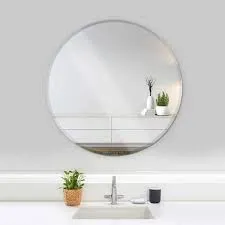

The Rise of Aluminum Alloy Mirrors Enhancing Reflection and Resilience
In the realm of modern materials, aluminum alloy mirrors have emerged as a prominent choice for various applications, ranging from automotive components to architectural features. Combining the lightweight nature of aluminum with the strength and durability of alloying elements, these mirrors offer exceptional reflective properties while addressing several practical challenges faced by traditional glass mirrors.
Aluminum itself is a versatile metal known for its lightweight and malleable characteristics. When alloyed with elements like magnesium, silicon, or copper, its mechanical properties can be significantly enhanced, yielding a product that is both strong and resistant to corrosion. This resistance is particularly valuable in outdoor environments where exposure to moisture and varying temperatures can lead to significant wear and tear on conventional mirrors.
One of the standout features of aluminum alloy mirrors is their superior reflectivity. Aluminum, when polished, can achieve reflectivity levels exceeding 90% across a wide range of wavelengths, including visible light. This makes aluminum alloy mirrors an excellent choice for applications requiring efficient light reflection. For instance, in the telecommunications industry, the use of these mirrors can help optimize the performance of laser systems and improve signal transmission efficiencies.

In addition to their optical advantages, aluminum alloy mirrors are also favored for their durability
. Unlike glass mirrors, which can shatter or break upon impact, aluminum mirrors are less prone to damage. This robustness makes them particularly suitable for use in challenging environments, such as in vehicles or outdoor installations, where vibrations and potential impacts can occur. Their lightweight property also contributes to more efficient designs in automotive engineering, where reducing weight is critical for improving fuel efficiency and handling.Moreover, the manufacturing process of aluminum alloy mirrors has become increasingly sophisticated. Techniques such as CNC machining, precision polishing, and advanced coating technologies have significantly improved the performance and aesthetic appeal of these mirrors. Additionally, anodizing processes can augment their surface properties, leading to enhanced durability and visual appeal.
Despite these advantages, the adoption of aluminum alloy mirrors is influenced by certain considerations. For instance, the reflective quality might vary based on the alloy composition and finish. Therefore, careful selection of materials and processes is imperative to ensure that the desired reflective properties are achieved.
In conclusion, aluminum alloy mirrors are transforming various industries with their unique combination of lightweight, strength, and excellent reflectivity. As technology advances and the demand for innovative materials continues to grow, these mirrors are poised to play an increasingly integral role in enhancing not only functionality but also the aesthetics of many applications, from high-tech gadgets to cutting-edge architectural designs.